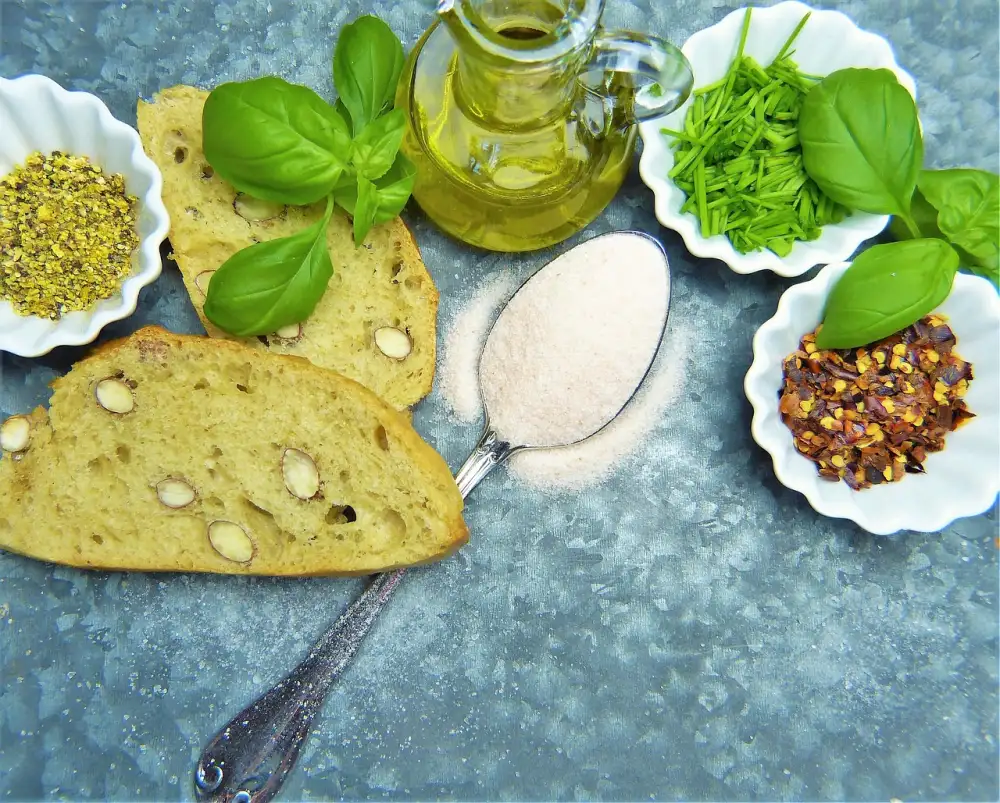Discover the Benefits of Gluten-Free Flour for a Healthier Lifestyle

In recent years, there has been a growing interest in gluten-free diets and the use of gluten-free flour as a healthier alternative. Gluten-free flour has gained popularity among individuals with celiac disease, gluten sensitivity, or those simply looking to improve their overall health. But what exactly is gluten-free flour and why is it beneficial? Let's delve into the world of gluten-free flour and discover its advantages for a healthier lifestyle.
Understanding Gluten and its Impact on Health
Gluten is a protein found in wheat, barley, and rye. For some individuals, consuming gluten can lead to various health issues. One common condition is celiac disease, an autoimmune disorder where the body reacts negatively to gluten, damaging the small intestine. This can result in nutrient deficiencies and digestive problems.
Even if you don't have celiac disease, you may still experience gluten sensitivity or intolerance. Symptoms can include bloating, abdominal pain, fatigue, and headaches. Avoiding gluten-containing foods is crucial for those with these conditions.
By eliminating gluten from your diet, you can improve your overall health. Many people report increased energy levels, better digestion, and improved skin appearance after adopting a gluten-free lifestyle. Understanding the impact of gluten on your health is the first step towards making informed choices about your diet.
What is Gluten Free Flour?
Gluten free flour is a type of flour that does not contain gluten, a protein found in wheat, barley, and rye. It is made from alternative grains and starches such as rice, corn, potato, almond, and tapioca. This flour is specifically designed for individuals with gluten intolerance or those following a gluten-free diet. Gluten free flour provides a suitable substitute for traditional wheat-based flours in various recipes while still allowing individuals to enjoy their favorite dishes without the negative effects of gluten.
Benefits of Using Gluten Free Flour
Using gluten-free flour in your cooking and baking can offer numerous benefits for a healthier lifestyle. Firstly, it is a great option for individuals with celiac disease or gluten sensitivity, as it allows them to enjoy a wide range of dishes without experiencing digestive issues. Additionally, gluten-free flour is often higher in fiber and nutrients compared to traditional wheat flour, making it a nutritious choice. It can also help in maintaining stable blood sugar levels, making it suitable for those with diabetes or looking to manage their weight. Lastly, using gluten-free flour opens up a whole new world of flavors and textures, allowing you to experiment with different recipes and create unique culinary delights.
Types of Gluten Free Flours Available
There are several types of gluten-free flours available on the market today. Some popular options include almond flour, coconut flour, rice flour, and sorghum flour. Almond flour is made from finely ground almonds and has a slightly sweet and nutty flavor. Coconut flour is made from dried coconut meat and adds a subtle tropical taste to baked goods. Rice flour is made from ground rice grains and has a neutral flavor, making it versatile for various recipes. Lastly, sorghum flour is made from the whole grain sorghum and has a mild flavor that works well in both sweet and savory dishes. These different gluten-free flours offer unique textures and tastes, allowing individuals with dietary restrictions to still enjoy a wide range of delicious foods.
Tips for Baking with Gluten Free Flour
1. Use a mix of gluten free flours: Combining different types of gluten free flours, such as rice flour, almond flour, and tapioca flour, can help achieve a better texture and taste in your baked goods.
2. Add binders: Since gluten is responsible for binding ingredients together, it's important to add binders like xanthan gum or guar gum to your recipes. These will help give structure to your baked goods.
3. Increase moisture: Gluten free flours tend to absorb more moisture than traditional flours. To prevent dryness, add extra liquid or use ingredients like applesauce or yogurt to keep your baked goods moist.
4. Experiment with ratios: Finding the right ratio of gluten free flour to other ingredients may take some trial and error. Start by following a trusted recipe and gradually adjust the amount of flour until you achieve the desired texture.
5. Allow for longer baking time: Gluten free baked goods often require more time in the oven to fully cook through. Keep an eye on your treats and be prepared to extend the baking time if needed.
6. Let it cool: Gluten free baked goods can be delicate when hot, so allow them to cool completely before handling or removing them from pans. This will help maintain their shape and prevent crumbling.
By following these tips, you can create delicious gluten free treats that are just as enjoyable as their gluten-filled counterparts!
Incorporating Gluten Free Flour into Your Diet
Incorporating gluten free flour into your diet is a great way to embrace a healthier lifestyle. Whether you have celiac disease, gluten intolerance, or simply want to reduce your gluten intake, using gluten free flour can open up a world of culinary possibilities.
One of the easiest ways to incorporate gluten free flour into your diet is by substituting it for regular flour in your favorite recipes. From cookies and cakes to breads and pastas, there are countless gluten free alternatives available that taste just as delicious as their traditional counterparts.
Gluten free flour can also be used to thicken sauces and soups, providing a smooth and creamy texture without the use of wheat-based ingredients. It can even be used as a coating for frying or breading meats and vegetables.
When incorporating gluten free flour into your diet, it's important to remember that different types of gluten free flours have different properties. Some may require additional liquid or binding agents to achieve the desired consistency. Experimenting with different recipes and techniques will help you find the perfect balance.
Additionally, don't be afraid to get creative with your cooking. Gluten free flour opens up a whole new world of flavors and textures, allowing you to explore unique dishes from various cuisines around the globe.
By incorporating gluten free flour into your diet, you can enjoy all the benefits of a healthier lifestyle without sacrificing taste or variety. So go ahead, give it a try and savor the flavors of life with gluten free flour!
Gluten Free Flour Substitutes for Traditional Recipes
If you're looking to make your favorite recipes gluten-free, there are several flour substitutes that can help you achieve the same delicious results. Here are a few options to consider:
1. Almond Flour: Made from ground almonds, almond flour is a popular choice for gluten-free baking. It adds a nutty flavor and moist texture to baked goods.
2. Coconut Flour: Derived from dried coconut meat, coconut flour is high in fiber and low in carbohydrates. It gives baked goods a light and fluffy texture.
3. Rice Flour: Made from finely milled rice, rice flour is a versatile option for gluten-free baking. It can be used in a variety of recipes, including cakes, cookies, and breads.
4. Oat Flour: While oats themselves are naturally gluten-free, it's important to choose certified gluten-free oat flour to avoid cross-contamination. Oat flour adds a slightly sweet and hearty taste to baked goods.
5. Quinoa Flour: Quinoa flour is made from ground quinoa seeds and has a slightly earthy flavor. It's packed with protein and nutrients, making it an excellent choice for gluten-free baking.
When substituting gluten-free flours in traditional recipes, it's important to note that they may absorb liquids differently than wheat flour. You may need to adjust the amount of liquid or add additional binding agents like xanthan gum or psyllium husk powder to achieve the desired texture.
Experimenting with different combinations of gluten-free flours can also yield unique flavors and textures in your baked goods. Don't be afraid to get creative and try new things!
By incorporating these gluten-free flour substitutes into your favorite recipes, you can enjoy the same delicious flavors while embracing a healthier lifestyle without compromising on taste or texture.
In conclusion, embracing the health benefits of gluten-free flour can be a game-changer for those seeking a healthier lifestyle. By eliminating gluten from your diet, you can reduce inflammation, improve digestion, and potentially alleviate symptoms associated with gluten sensitivity or intolerance. With a wide variety of gluten-free flours available, there are endless possibilities for creating delicious and nutritious meals. So why not give it a try and savor the flavors of life with gluten-free flour? Your body will thank you!
Published: 21. 12. 2023
Category: Health



